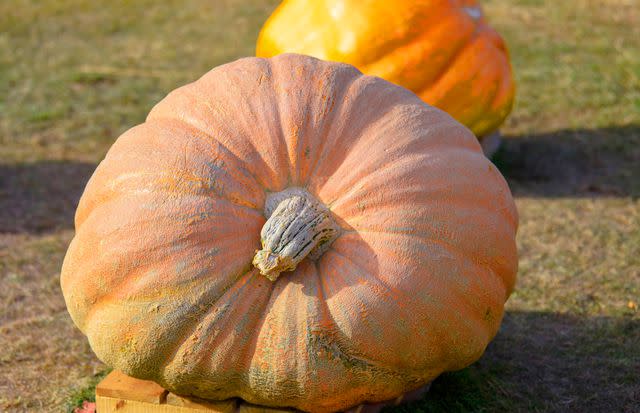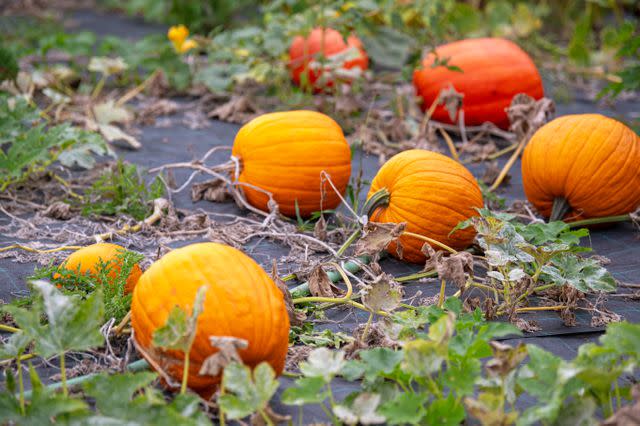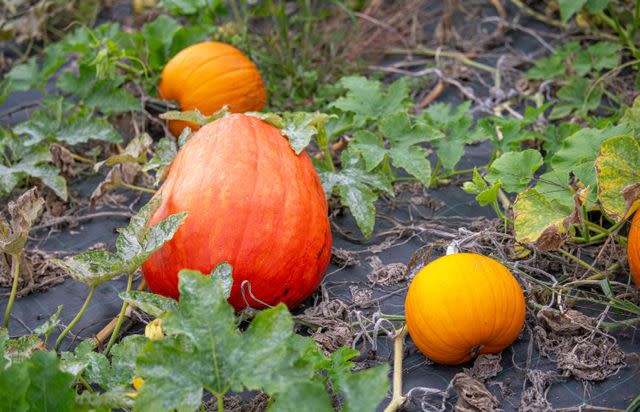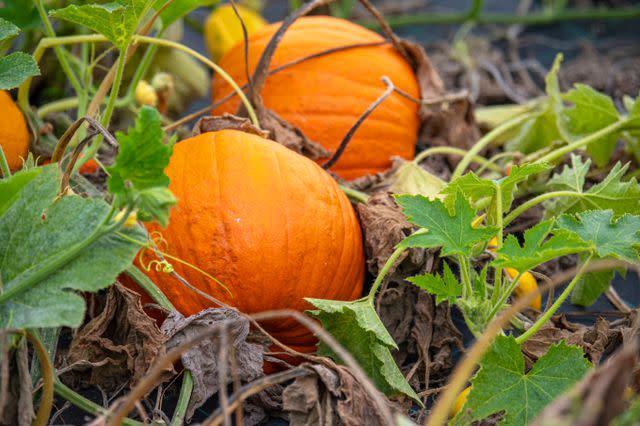How to Grow Giant Pumpkins That Are Worthy of Prizes
While many folks like to grow large pumpkins for carving and autumn decor, some want to truly massive pumpkins. A truly giant pumpkin, one worthy of competitions and state fairs, weigh many hundreds of pounds. The largest pumpkin grown in the United States on record weighed over 2,500 pounds.
Giant pumpkins aren't usually the rounded shapes we're used to carving for autumn decorations; their size often means they spread into oval shapes. As they get bigger, they need extra help getting enough sun, water, and nutrients. If you want to give it a shot, here are our best tips for how to grow a giant pumpkin.
Giant Pumpkins Need Time
Plant your pumpkin seeds so they have plenty of time for them to put on size. Most of the large varieties ripen within about 120 days (4 months) and some a bit faster (100 days).
Giant Pumpkins Need Space
Once the pumpkins start growing large on the vine, you want to have space on all sides of it to make sure it gets maximum sun exposure. It's best to have a large patch devoted entirely to this endeavor, probably at least 800 square feet for each plant. This may seem extreme, but the vine needs a lot of space to grow if you want to grow a giant variety. The site should also have well-draining soil and be far from any shaded areas.
Choose the Right Cultivars
Certain pumpkin varieties really lend themselves to growing huge, and the following list of cultivars are some of our favorites. Note that these pumpkins don't tend to be very good for eating, especially after they've gotten bigger than 50 pounds in weight.
Biggest Pumpkin Cultivars
'Prizewinner' is a round hybrid variety that has excellent deep orange color and can grow up to 300 lbs. and usually reaches at least 100 lbs. (Matures in 120 days.)
'Atlantic Giant' is a patented variety developed by a giant pumpkin enthusiast. The flesh is pink to orange and it often reaches 300 lbs. in size, and can easily grow larger. (Matures in 125 days.)
'Big Moon' is a pale orange variety that can grow up to 200 lbs. though its shape can be somewhat irregular compared to others. (Matures in 120 days.)
'Big Max' is a giant heirloom squash pumpkin with flesh that ranges from pale to dark orange. It can grow between 100 and 300 lbs. (Matures in 125 days.)
'Jaune de Paris' is a bright yellow oval pumpkin that can get up to 100 lbs. It's great for carving and decorating as well. (Matures in 100 days.)
Give Pumpkins a Good Start
The best way to get your giant pumpkins off to a great start is to plant your pumpkin seeds in small peat pots (12 inches in diameter) in basic potting soil in late April. Transplant your seedlings outdoors after 14 days; the leaves will start to open from their curled shape and expand to a fuller size. If there is a late spring frost, try to protect the seedlings with a cold frame or a floating row cover. You can also plant pumpkin seeds directly in the ground once the danger of frost has passed.
Once your pumpkins start to grow, you'll want to selectively prune some of the fruits so the plant's energy will go to nourishing a smaller number, allowing them to grow large. Experienced growers recommend waiting until the pumpkins reach the size of a baseball, then choosing three or four fruits with the best overall shape and snipping the rest.

The Spruce / Evgeniya Vlasova

The Spruce / Evgeniya Vlasova

The Spruce / Evgeniya Vlasova

The Spruce / Evgeniya Vlasova
Fertilize Strategically
Giant pumpkins benefit from careful use of fertilizers. The soil should be prepared for planting a few days before planting seeds or transplanting seedlings. Broadcast granular fertilizer over the planting area and then work it in 4 to 6 inches below the surface. Once fruits form, you can start fertilizing with a mix of nitrogen, phosphorous and potash; you will need a large amount (2, 3 and 6 pounds of each, respectively, per 1000-square-foot area for the entire growing season). You can mix it all together in a container and apply every two to three weeks.
Other fertilizing options can also work well. Foliar fertilizers (mixed with water and sprayed directly on the leaves) are used by many pumpkin growers. But the easiest fertilizing method is to choose a general water-soluble fertilizer for vegetables and apply at the base of the plant, at least 6 inches from the root crown, every two weeks.
Water Well
Pumpkins can start to grow very rapidly as the season progresses, and giant pumpkins can sometimes put on as much as 30 pounds a day (much of it water weight).
Pumpkins need plenty of water but it's important not to over water them. Water when the surface of soil by the center of the plant is dry, and water enough so the soil feels moist but not wet.
Prune Vines Properly
Pumpkins have three different kinds of vines: the main vine, the secondary vines/runners, and tertiary vines that grow off of runners. Pruning correctly is crucial to helping your giant pumpkin put on size.
The first time, you want to trim back the main vine is when it has grown between 10 to 15 feet long when measured from the center of the plant to the end of the vine.
Trim the runners when they reach 10 feet long.
The tertiary vines should be trimmed as soon as you notice them.
As the growing season intensifies, check your pumpkin daily and prune as needed, because the vines will start to grow fast.
Frequently Asked Questions
What is the secret to growing a giant pumpkin?
The secret to growing a giant pumpkin is choosing a variety of pumpkin that is known for growing very large, and then properly caring for it.
How do you make pumpkins grow massive?
Growing massive pumpkins requires plenty of space, sunlight, water and fertilizer.
How long does it take to grow a giant pumpkin?
Most pumpkins take at least 100 days to mature from seed to fruit, but for giant pumpkins you will need at least 120 days or longer.

